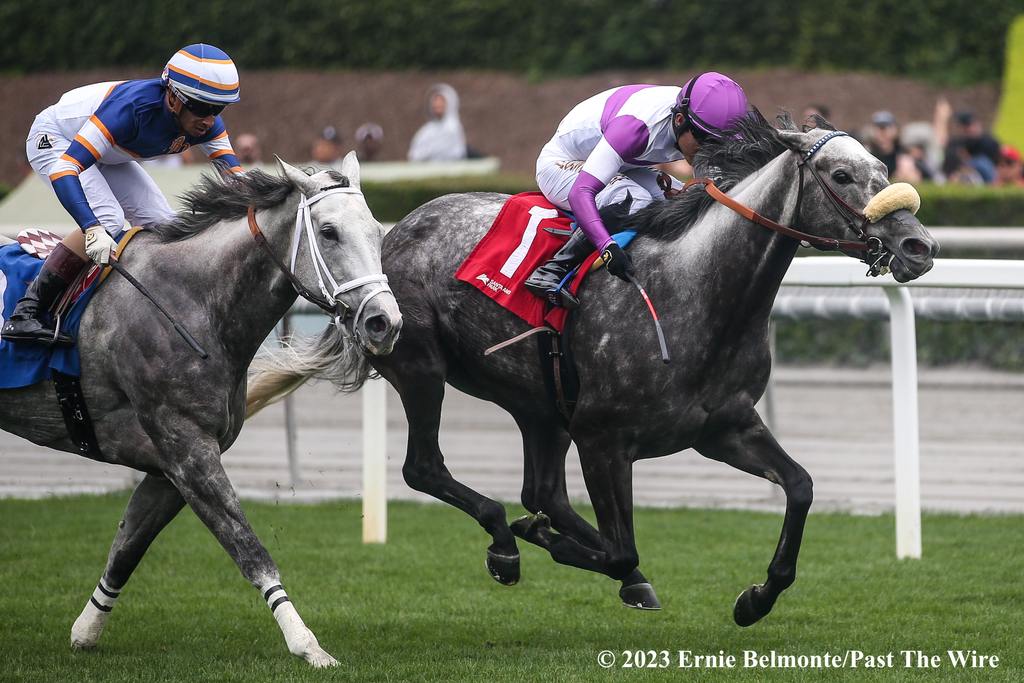
Thoroughbred horse racing is a sport that’s deeply rooted in history and tradition. It captures the hearts of enthusiasts from around the world. The qualities that set horse racing apart from other sporting events include elegance and action like nothing else.
Did you know that horse racing dates back centuries? The races showcase the incredible athleticism and spirit of thoroughbred horses, well-known for their grace, endurance, poise, and speed.
In this beginner’s guide, we’ll tell you all you need to know about the nature of the sport to get started. So, without further ado, let’s dive right into it!
Understanding Thoroughbred Racing Classes
There are mainly four classes in horse racing—Maiden, allowance, claiming, and stakes. Understanding what goes on in each class is the first step to learning about the world of thoroughbred horse racing.
1. Maiden Races
This is where new horses attempt to prove their worth. Maiden races are the stepping stone for young thoroughbreds that have yet to win a race. These horses make their debut in maiden races and vie for their first victory so they can progress through their careers and accumulate more wins to play in higher-order races.
These races act as the proving grounds to earn experience and refine skills. Every promising talent was once a maiden racehorse.
2. Allowance Races
Once horses have won a certain number of races or demonstrated potential without being very proficient enough to face off against better horses, they participate in allowance races.
These races are like the middle ground between the maiden races and the biggest events. Allowance races can offer many competitive opportunities for horses who wish to transition from maiden races to more challenging competitions.
3. Claiming Races
These races introduce a little bit of trading. Claiming races are events where horses are listed for a predetermined claiming price. Potential buyers can place a claim to acquire a horse after a race.
Such events provide an opportunity for owners to sell horses or acquire new ones. This stage is very important in a horse’s career and adds the much-needed dynamism and fluidity to the world of horse racing.
4. Stakes Races
Finally, stakes races are the pinnacle of thoroughbred racing. These attract the most accomplished horses and generate a lot of press and fanfare. Usually, stakes races are categorized into Grade 1, Grade 2, and Grade 3 based on purse size and some other factors.
There are substantial financial rewards involved in these races, and they can make or break a horse’s reputation and legacy.
Finding Your Favorites
The next step is finding favorite horses, events, and jockeys. To begin with, we recommend the stakes races as a stepping stone. Once you have a good grasp on good horse racing performance and stats, you can start looking into claiming and allowance races.
And once you feel confident enough to be an expert judge of a horse and jockey’s performance, it’s time to look into the maiden races to pick new favorites to support!
Apart from following the sport religiously, following the races with the odds for wins and losses is quite possibly the most effective way to build a statistical pool of actionable knowledge and find your favorite horses, riders, tracks, and tournaments.
Bodog is one of the most reliable betting sites Canada, for example, and it offers highly reliable odds that you can use to predict outcomes and learn about the performances of individual thoroughbred horses. For example, Elite Power is the current favorite with an odd of +175 for the Breeders’ Cup Sprint. And for the Turf, the oddsmaker has set odds of +225 for Equinox, ahead of other horses like Emily Upjohn and Mostahdaf.
This is very accurate and can be a good starting place for newcomers to find the right horses to follow and possibly bet on. Besides, a good place to start is our guide on the fastest three-year-olds.
The Role of Jockeys & Trainers
Lastly, we want you to learn all about jockeys and trainers, who are every bit as important as the horse. In fact, the success of a racehorse goes beyond any innate talent and physicality. The jockey and the trainer can shape a legacy by guiding the horse to victory.
That being said, it’s important to note that genes do play a pivotal role in a horse’s speed.
Jockeys are the maestros of the saddle—Skilled riders who guide the thoroughbreds during a race. They are athletes with exceptional balance and strength to command their equine partners around the track.
Every jockey has the responsibility of understanding their mount’s temperament to better adapt their riding style. The ability to communicate and form a bond with the horse is instrumental to achieving peak performance on race day.
Next, the trainers are the architects of excellence. A trainer is the mastermind responsible for the comprehensive care, conditioning, and preparation of the horse. Their expertise goes beyond the racetrack and typically involves the daily training regimen and nutrition.
A good trainer can identify a horse’s unique abilities and limitations to tailor a training program that nurtures its potential. Horses also have illnesses and injuries that need monitoring, and it’s the trainer’s job to protect them.
In Conclusion
Hopefully, our beginner’s guide was a good starting point for you. We always welcome those interested in the world of horse racing with open arms. It’s a learning experience, and you should take it slow when just starting.
Beyond all this, there’s a ton of stuff to discover, such as learning about the betting strategies, knowing about the famous thoroughbred events and races, understanding thoroughbred care and welfare, and taking a deep dive into the rules and regulations!
So, where do you go from here? Well, we suggest you start learning about handicapping and race analysis while also looking for racing tracks that interest you.



